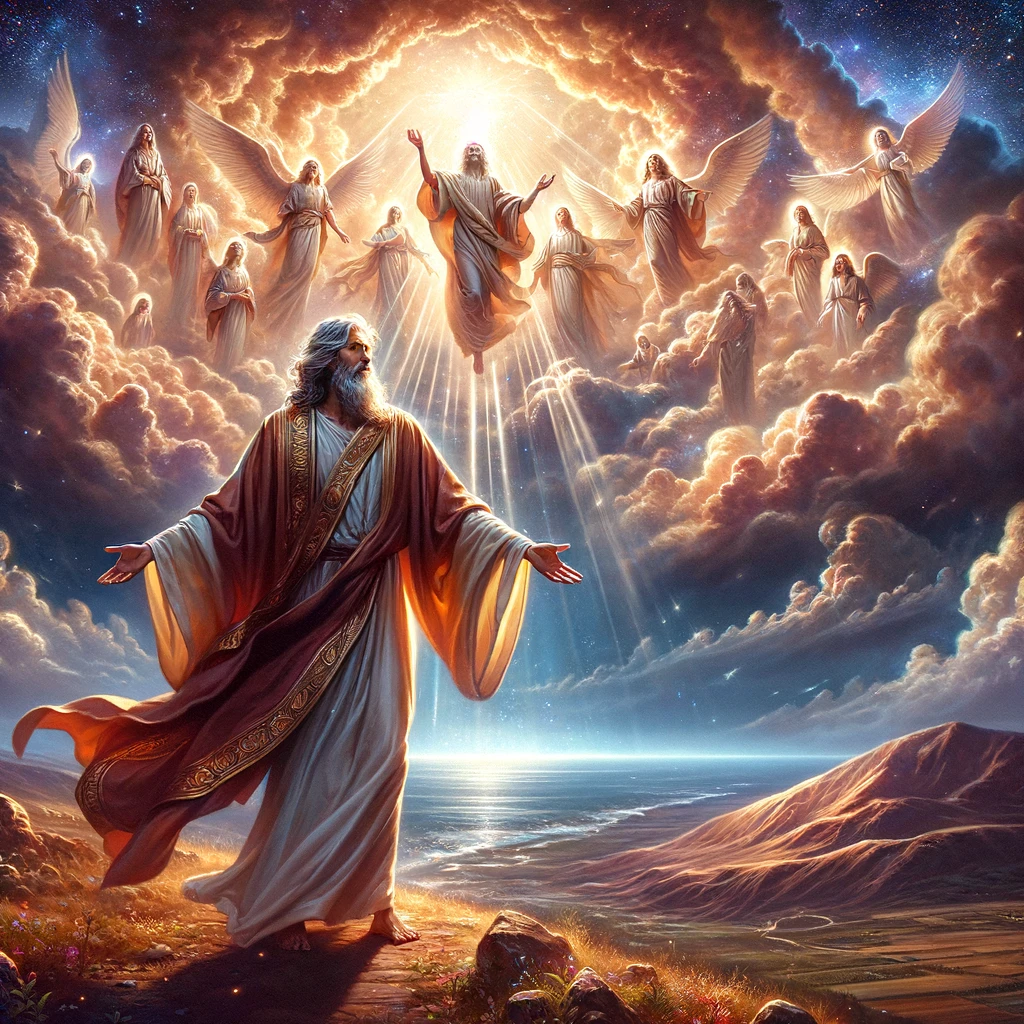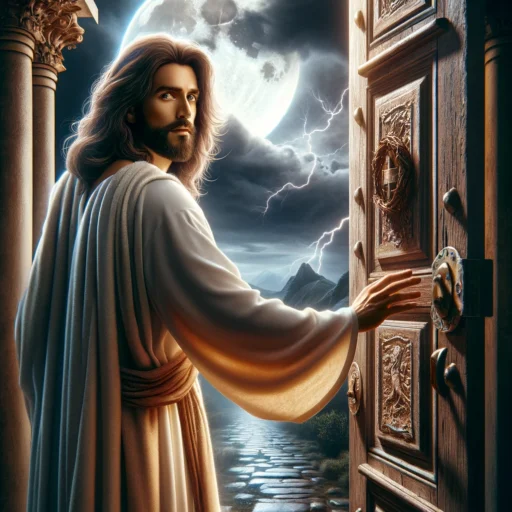The Book of Enoch

A majestic illustration depicting the biblical figure Enoch ascending to the heavens. In the foreground, Enoch stands with outstretched arms
The Book of Enoch, also known as 1 Enoch, is an ancient Jewish religious work, ascribed to Enoch, the great-grandfather of Noah. Fragments of the Book of Enoch were among the texts discovered among the Dead Sea Scrolls. The parts of the Book of Enoch that were found among the Dead Sea Scrolls include portions of the following sections:
- The Book of the Watchers (1 Enoch 1–36): This section describes the fall of the Watchers, angels who fathered the Nephilim (giants), and Enoch’s journey through the heavens.
- The Book of Parables (1 Enoch 37–71): This section contains parables and visions that Enoch received, including visions of the Son of Man and the judgment of the wicked.
- The Astronomical Book (1 Enoch 72–82): This part, also known as the Book of the Heavenly Luminaries, describes the movements of the heavenly bodies and the calendar.
- The Book of Dream Visions (1 Enoch 83–90): This section includes Enoch’s dream visions, which depict the history of Israel and the future judgment.
- The Epistle of Enoch (1 Enoch 91–108): This part contains various exhortations and predictions about the righteous and the wicked.
The fragments found among the Dead Sea Scrolls primarily consist of Aramaic manuscripts, and they have provided important insights into the text and its transmission. The presence of the Book of Enoch among the Dead Sea Scrolls has also shed light on its significance and use within the Jewish community at Qumran.
The book of Enoch, considered apocryphal by most religions today but not all, tells of many elaborations of scripture. Some faiths view it as canonical. In fact, it seems that the early Christians believed it to be authentic. Even many “church fathers” believed it to be so.
The Council of Laodicea in 381 AD rejected it. Most likely due to it conflicting with the further evolving church teachings. It fell out of use by most churches.
Other “additions” to Enoch (a.k.a. Enoch 1) other than the above mentioned, have not been found in the dead sea scrolls and are assumed to be written later. Discernment is needed.
An interesting point made in more than one place in Enoch is that Yahweh is referred to as The Most High, Lord of spirits, Lord of Glory, The Eternal, The Eternal God, The Holy Great One, and the Ancient One. His son, Yeshua is referred to as the Elect One, son of Man, and The Righteous One.
I find this book very intriguing. It is worded much like Daniel with visions and the descriptions of the Most High for Yahweh. It also follows the patterns of thought concerning judgment and the righteous prevailing. Daniel is more specific with signs and times though. I would call the content and style of Enoch like a mixture of Daniel and Revelation. I personally believe it (Enoch 1) could be just as authentic as Daniel and Revelation.
It talks about Michael and Gabriel as being in a group of powerful angels who “keep watch.”
The book also tells of four “figures,” also referred to as “four presences” who didn’t sleep but continually praised the lord of Glory (Yahweh) and blessed the Elect One (Yeshua) and those who trust in the Lord of Spirits (Yahweh). These four figures surround the Lord of spirits. (Enoch 40) Could this be the four creatures in Revelation that surround the throne? It is!
6 Before the throne was something like a sea of glass, similar to crystal. In the middle of the throne, and around the throne were four living creatures full of eyes before and behind. 7 The first creature was like a lion, and the second creature like a calf, and the third creature had a face like a man, and the fourth was like a flying eagle. 8 The four living creatures, each one of them having six wings, are full of eyes around and within. They have no rest day and night, saying, “Holy, holy, holy[a] is the Lord God, the Almighty, who was and who is and who is to come!”
Is the Michael and Gabriel mentioned in this book the same as the Michael and Gabriel in the book of Daniel? I bet it is. If it is, that means that Michael is a powerful angel who works closely with the son of man (Jesus) to accomplish powerful works! See the chapter on Is Michael, Jesus?
